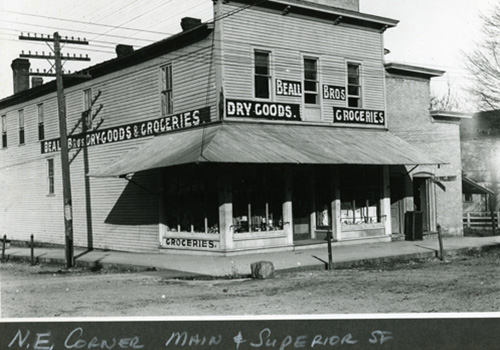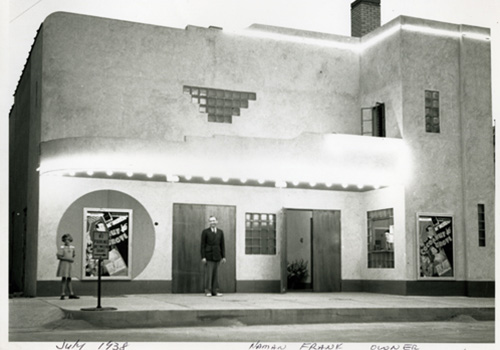Wayland History
 Two hundred years ago, Wayland was a tree-covered wilderness, watered by streams and ponds. The people who lived here, the Match-E-Be-Nash-She-Wish Band of the Pottawatomi, lived in settled villages, farming corn, hunting the game, harvesting the wild rice of the lakes and making maple sugar from the great trees of the forest.
Two hundred years ago, Wayland was a tree-covered wilderness, watered by streams and ponds. The people who lived here, the Match-E-Be-Nash-She-Wish Band of the Pottawatomi, lived in settled villages, farming corn, hunting the game, harvesting the wild rice of the lakes and making maple sugar from the great trees of the forest.
Outsiders began arriving in the early 1800’s and by 1826 the land had been surveyed for settlement. Col. Isaac Barnes, attracted by the extensive forests of pine and hardwoods, purchased a tract of land along the Rabbit River and began operating a mill producing lumber and wooden shingles, giving the area its first name, Lumberton. Nelson Chambers and his family arrived in 1837 and began clearing the land for farming, using the trees to shave shingles which he sold to markets in Battle Creek and Kalamazoo. By the 1840s several families had settled in the area that was now being called Chamber’s Corners and by 1844 there were enough children in the area to justify the establishment of a school.
 Wayland would probably have remained a sleepy backwater if it hadn’t been strategically placed between two larger towns, Grand Rapids and Kalamazoo. Before 1850, there was no direct route between the two cities, but in 1855 a road of thick-sawn wooden planks was built, running right through Chamber’s Corners. The busy toll road made the little village a natural stopping place for people making the trip between the two cities and the town began growing in response, creating businesses to serve the constant stream of visitors and new industries taking advantage of the easy access to Grand Rapids and Kalamazoo.
Wayland would probably have remained a sleepy backwater if it hadn’t been strategically placed between two larger towns, Grand Rapids and Kalamazoo. Before 1850, there was no direct route between the two cities, but in 1855 a road of thick-sawn wooden planks was built, running right through Chamber’s Corners. The busy toll road made the little village a natural stopping place for people making the trip between the two cities and the town began growing in response, creating businesses to serve the constant stream of visitors and new industries taking advantage of the easy access to Grand Rapids and Kalamazoo.
The plank road, despite its usefulness as a transportation corridor between Grand Rapids and Kalamazoo, was short-lived; the planks wore thin and where they wore out completely, were replaced with gravel, making for a pretty rough ride. Fortunately, the railroad arrived in 1870, providing another stimulus for growth for the little town, which had been officially named Wayland in 1868. Over the next few decades, the right-of-way for the old plank road was gradually bought up by the state and by the turn of the century a road for automobiles had been established, the original Route 131, which once again, ran through downtown Wayland.
Wayland was a bustling town by the mid-20th century. Surrounded by farms and dairies, it was the hub for the countryside, a place to go for supplies and for fun. Businesses stretched along Main Street and Superior and factories clustered along the railroad track west of town. One small business, Helvetia, purchased milk from local dairies and condensed it for sale in tins. This business eventually became Pet Milk, (now Bay Valley Foods) and has been a major industry in Wayland for nearly a century.
Today, Wayland is looking forward to a bright future with new businesses and industries opening their doors. Certainly the recent largest impact has been the Gun Lake Casino, owned by the Match-E-Be-Nash-She-Wish Band of Pottawatomi Indians of Michigan, providing jobs for many people in Wayland and a stimulus for continued growth.
Written by: Gail Hollinger
Photos Courtesy of: Jay L. Smith
